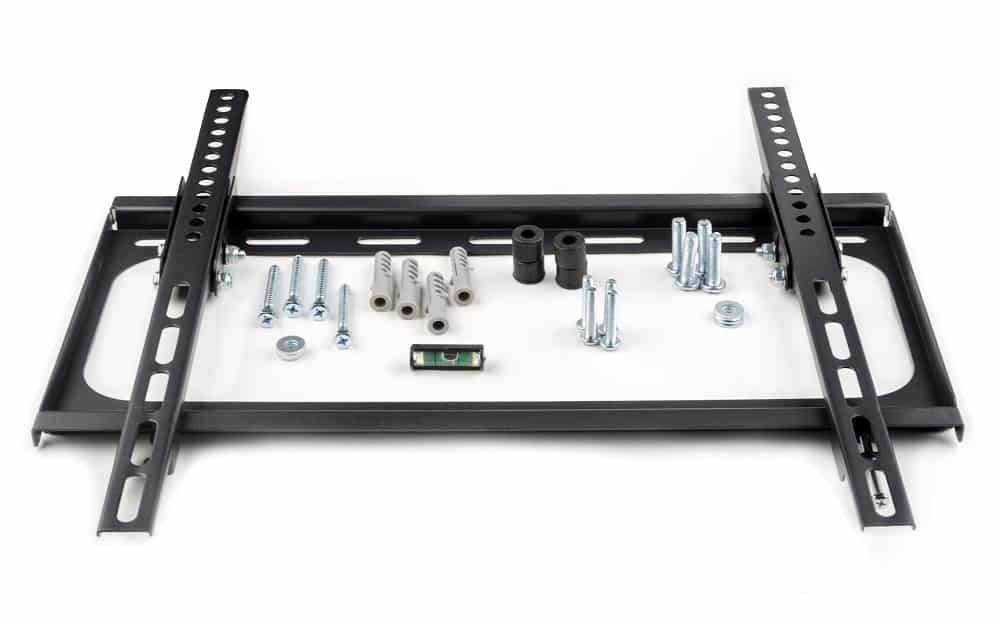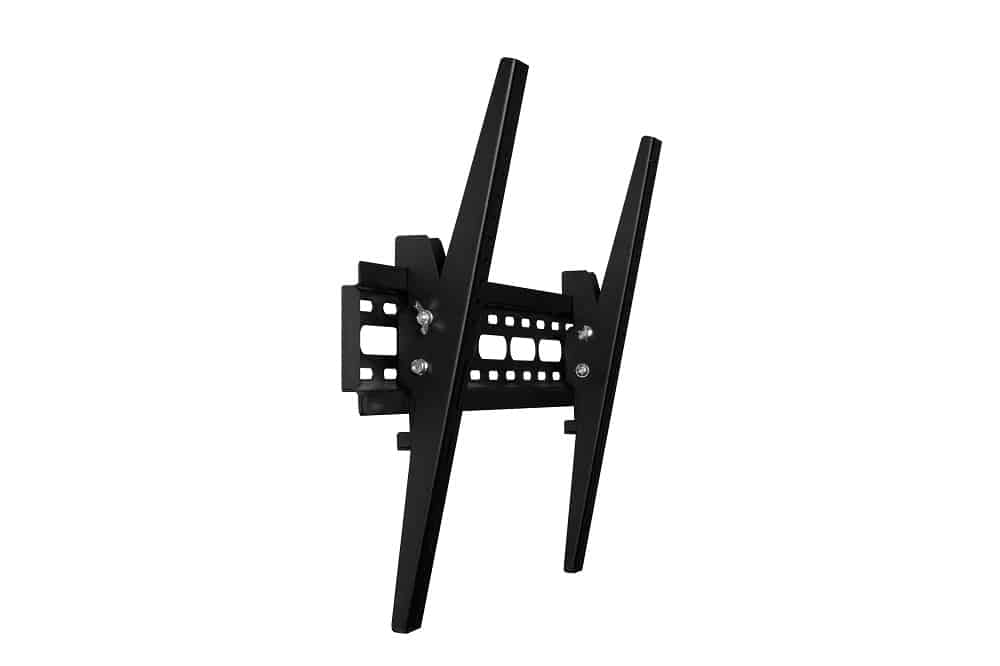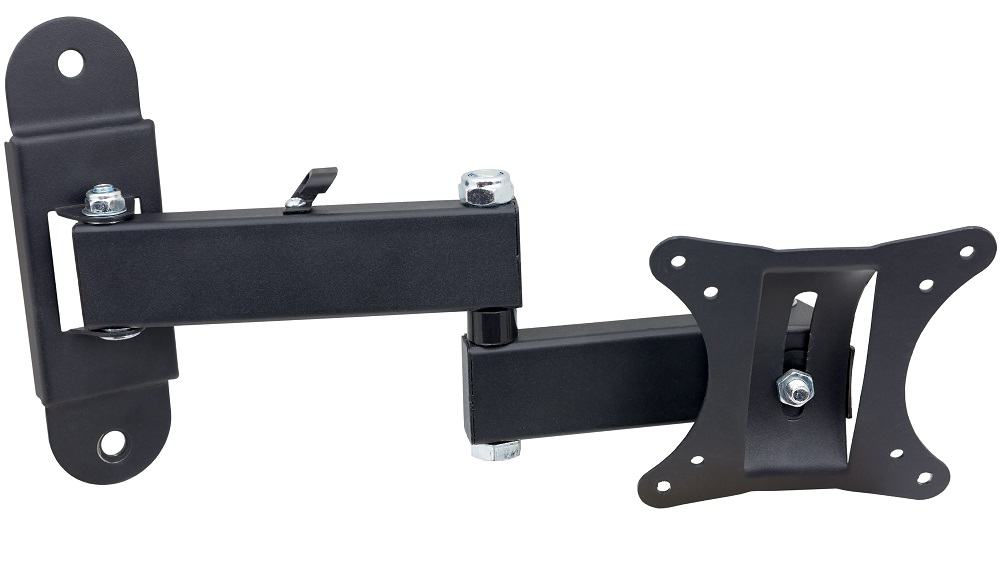Whether you're choosing to install your TV on the wall for aesthetic or space-saving reasons, ensuring you have the correct type of wall mount is important.
There are three main types of brackets, all fabricated to offer different viewing experiences.
Wall-mounted TV brackets are available in fixed, tilting, or articulating styles.

Fixed TV Mounts or flat or low-profile mounts, are the cheapest type and the easiest to fit.
They consist of a rectangular bracket made from reinforced steel, including all installation hardware. Fixed mounts sit around 1-inch from any flat wall, hence low-profile. They take less than an hour to install and require no specialist tools, just a level, drill, and a screwdriver.
Once the bracket is securely in place, the TV 'hooks over' the rails.
Although fixed mounts are cheap, they do come with some drawbacks. Once in situ, that is the only angle at which you will view the screen; ensure you measure distances and drill holes in the right place the first time.
Also, reaching behind the TV to add devices or switch out cables is a virtual impossibility. To add a new HDMI lead, you have to lift the TV from the mount.

If you intend to have your television 42" or more from the ground, you should use a tilting mount.
Their profile is slightly deeper than that of a fixed mount, enabling the viewer to push the bottom of the screen towards the wall, causing it to pivot and the top to tilt outwards. It typically gives a 5° - 15° better viewing angle, perfect for those who prefer watching TV from a supine or slouched position.
A tilted mount is best for a TV installed above a fireplace or similar; they provide better viewing options.
Unlike fixed mounts, it is possible to change cables without removing the TV from the bracket; this reason alone is worth the expected slight price increase.
Although tilting brackets pivot up and down, they don't move in other directions.

Otherwise known as extending arm, swivel, or full-motion TV mounts; they offer the greatest versatility to the viewer.
The TV sits on a moving arm that physically pulls away from the wall. It offers superb viewing access for multiple seating areas or larger spaces. The TV swivels on a horizontal axis providing both lateral and linear movement, supplying the widest array of viewing angles.
Articulating mounts are of exceptionally strong construction; they withstand the weight of most LCD or small CRT televisions without sagging under pressure.
Cost is one of the downfalls of this type of wall-mount; although not prohibitively priced, they are the most expensive of the available brackets.
They are also the most complicated to install and might require professional help.
If you prefer not to use a pedestal or stand for the TV, you might consider a ceiling mount.
They are ideal in large rooms where the viewing area isn't close enough to any walls.
As the name suggests, the brackets mount on the ceiling and feature an extended downward arm with tilt and pitch features. It allows for multiple viewing scenarios and also suits limited space rooms with no vacant wall space.
They are awkward to install and best left in the hands of a professional.
To ensure you get the best viewing experience, from what was probably a very expensive TV, follow your manufacturer's recommendations.
Choose which of the above options best suits your viewing requirements.
The Video Electronics Standards Association lends its name to the style of pre-drilled holes on each mount. Their interface is what makes them compatible with each particular television. However, in recent years, the industry has realized the need for a universal fit design, and most modern televisions fall into this category.
As televisions get larger, they invariably weigh more. Each wall-mount has a clearly labeled set of designated guidelines, referring to maximum load and screen size. Television wall mounts are constructed from reinforced steel, and their incredibly tough anchors ensure they grip securely into place.
When using a fixed mount, ensure the screen is wider than the bracket to prevent any ugly overhang.
Similarly, if your TV has a curved screen, you may need to purchase an additional bracket to counteract the style; Always defer to the manufacturer's handbook for advice.
Installing a TV above an open fire might shorten its life; heat and smoke can permeate the vents and damage the components.
Fortunately, new gas fireplaces are more compatible as much of the heat is directed outwards.
Always check the TV to distance ratio before drilling any unsightly holes in the wall.
For standard HDTV's the recommended is 2:1, the viewer should be no closer than twice the screen's width.
For 4K Ultra HDTV, that ratio decreases to 1.5:1
